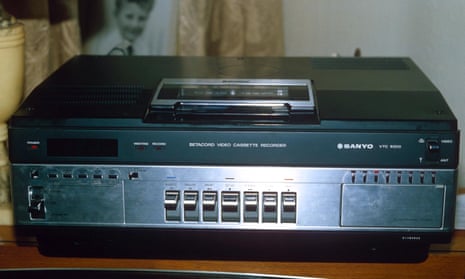Sony has announced that in March next year it will stop producing Betamax video cassette tapes, forty years after its introduction and 28 years after losing the war to VHS.
Assumed already dead by many, the final Betamax cassette will roll off the production line in March 2016 as its maker concedes defeat to the march of time, 20 ,maybe 30, years late.
The video cassette format was pioneered by Sony in the early 1970s and first released into homes embedded in a 19in TV in 1975. It was embroiled in a format war with rival video cassette VHS, produced by Japanese firm JVC.
Betamax came first and initially offered superior video quality, but when offered a license to use Betamax by Sony, rival JVC decided to develop its own open format to avoid Sony’s domination of the market with a format it would control.
Japanese in-fighting
In 1974, the Japanese ministry of international trade and industry decided, for the sake of consumers, that it would attempt to force the Japanese electronics manufacturers to standardise on one format, rather than have multiple incompatible formats.
Sony initially won favour of the Japanese government due to having come to market first. To fight the proprietary format, JVC convinced its major stakeholder Matsushita, Japan’s largest electronics manufacturer, responsible for the Panasonic and National brands, to back VHS. Hitachi, Mitsubishi and Sharp followed suit with JVC launching a VHS player in 1976, leading the Japanese government to abandon its video format plans and the eventual war.
Porn domination
VHS became a more open and widely adopted format for the video cassette, which resulted in a larger economy of scale, allowing VHS to beat Betamax on price.
That greater adoption and lower cost saw the pornography industry pick VHS as the format of choice for its home videos, which is largely considered the turning point that propelled VHS to victory.
In 1988, Sony conceded victory to the rival format producing its first VHS video cassette recorder. Sony’s last Betamax recorder was produced in 2002, but the company will continue to produce tapes until March 2016.
Both video cassette tape formats were superseded by the video CD in 1993 – a standard defined by JVC, Matsushita, Philips and Sony, the successor to the 1979 LaserDisc.
Video cassettes lingered until the introduction of the DVD in 1995 by Philips, Sony, Toshiba, and Panasonic. Movie studios adopted the format for its superior video quality and durability, initially leading to DVD players only, not recorders.
Only later in the mid-2000s did affordable home DVD video recorders arrive pushing out VCRs, which were shortly followed by hard drive-based personal video recorders.
Betamax may be dead, but VHS tapes are still in production. So long live the video cassette tape, the video CD, the DVD and the Blu-ray.

Comments (…)
Sign in or create your Guardian account to join the discussion